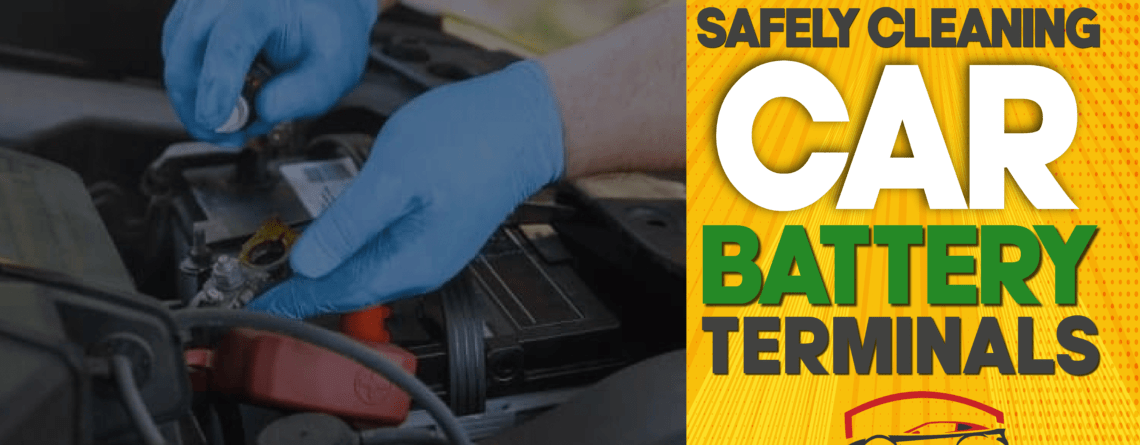Car batteries are an essential component of any vehicle. They provide the necessary electrical power to start the engine and run various systems, such as lights, air conditioning, and entertainment. However, over time, car battery terminals can accumulate dirt, grime, and corrosion. This buildup can interfere with the battery’s performance and lead to various issues, such as difficulty starting the car, dim headlights, and even battery failure. Therefore, it is essential to clean your car battery terminals regularly to maintain their functionality and prolong their lifespan.
In this article, we will discuss some guidelines for safely cleaning car battery terminals. We will cover the following topics:
- The importance of cleaning your car battery terminals
- Safety precautions to take before cleaning your car battery terminals
- The tools and materials you will need
- The steps involved in cleaning your car battery terminals
- How to prevent future corrosion buildup
The Importance of Cleaning Your Car Battery Terminals.
Car battery terminals are the connection points between the battery cables and the battery itself. They play a critical role in transferring electrical power from the battery to the rest of the vehicle’s electrical system. However, over time, these terminals can accumulate dirt, grime, and corrosion, which can interfere with the flow of electricity. This buildup can lead to various issues, such as difficulty starting the car, dim headlights, and even battery failure. Therefore, it is essential to clean your car battery terminals regularly to maintain their functionality and prolong their lifespan. Regular cleaning can help remove dirt and grime, prevent corrosion buildup, and ensure proper electrical conductivity. Safety Precautions to Take Before Cleaning Your Car Battery Terminals
Cleaning car battery terminals involves working with potentially hazardous chemicals and electrical components. Therefore, it is crucial to take the necessary safety precautions before starting the cleaning process. Here are some safety tips to keep in mind:
Wear protective gear: Before you start cleaning your car battery terminals, make sure you wear protective gloves, safety glasses, and clothing that covers your skin. This will help prevent chemical burns, cuts, and other injuries.
Turn off the engine: Before you start cleaning your car battery terminals, make sure you turn off the engine and remove the key from the ignition. This will help prevent any accidental electrical shocks.
Remove jewelry and watches: Before you start cleaning your car battery terminals, make sure you remove any jewelry or watches that could come into contact with the battery or tools.
Keep children and pets away: Before you start cleaning your car battery terminals, make sure you keep children and pets away from the area. This will help prevent any accidental injuries.
The Tools and Materials You Will Need
- To clean your car battery terminals, you will need the following tools and materials:
- A wrench or pliers: You will need a wrench or pliers to loosen and remove the battery cables from the battery terminals.
- Baking soda and water: You will need baking soda and water to create a cleaning solution that will help remove corrosion and dirt from the battery terminals.
- A wire brush or toothbrush: You will need a wire brush or toothbrush to scrub the battery terminals and remove any buildup.
- Corrosion preventative spray: You will need a corrosion preventative spray to help prevent future corrosion buildup on the battery terminals.
The Steps Involved in Cleaning Your Car Battery Terminals
Now that you have taken the necessary safety precautions and gathered the required tools and materials let’s go through the steps involved in safely cleaning your car battery terminals.
Step 1: Remove the battery cables
The first step in cleaning your car battery terminals is to disconnect the battery cables from the battery terminals. Use a wrench or pliers to loosen the nut on the negative battery cable, then remove it from the battery terminal. Repeat the same process for the positive battery cable.
Step 2: Mix the cleaning solution
Mix a tablespoon of baking soda with a cup of water to create a cleaning solution. Stir the mixture until the baking soda dissolves completely.
Step 3: Apply the cleaning solution
Dip a wire brush or toothbrush into the cleaning solution and scrub the battery terminals and cables thoroughly. Make sure you cover all the areas with corrosion and dirt buildup.
Step 4: Rinse with water
After scrubbing the battery terminals and cables, rinse them with water to remove any residue left from the cleaning solution.
Step 5: Dry the battery terminals
Use a clean cloth or towel to dry the battery terminals and cables thoroughly. Make sure there is no moisture left on the battery or cables.
Step 6: Apply a corrosion preventative spray
Once the battery terminals and cables are dry, apply a corrosion preventative spray to the terminals. This spray will help prevent future corrosion buildup on the battery terminals.
Step 7: Reconnect the battery cables
After applying the corrosion preventative spray, reconnect the battery cables to the battery terminals. Make sure you connect the positive cable first, then the negative cable. Tighten the nuts on the battery cables to ensure a secure connection.
How to Prevent Future Corrosion Buildup
Regular cleaning of your car battery terminals is essential to prevent corrosion buildup. However, there are other measures you can take to prevent future corrosion. Here are some tips to keep in mind:
Keep your battery clean: Make sure you clean your car battery regularly to prevent dirt and grime buildup. A clean battery will reduce the chances of corrosion buildup on the terminals.
Check the battery fluid level: Make sure you check the battery fluid level regularly and add distilled water if necessary. Low fluid levels can cause the battery to overheat, leading to corrosion buildup.
Check the battery voltage: Make sure you check the battery voltage regularly with a voltmeter. A low voltage can cause the battery to overheat, leading to corrosion buildup.
Avoid overcharging the battery: Make sure you do not overcharge the battery, as this can cause the battery to overheat and lead to corrosion buildup.
Use a battery maintainer: Consider using a battery maintainer to keep your battery fully charged and prevent overcharging.
Conclusion
Cleaning your car battery terminals is essential to maintain their functionality and prolong their lifespan. By following the guidelines outlined in this article, you can safely clean your car battery terminals and prevent future corrosion buildup. Remember to take the necessary safety precautions before starting the cleaning process, gather the required tools and materials, and follow the step-by-step process to clean your car battery terminals thoroughly. Regular cleaning and maintenance of your car battery can help prevent various issues, such as difficulty starting the car, dim headlights, and even battery failure, ensuring a smooth and reliable driving experience. Visit Ray’s Garage for all your car maintenance needs.

